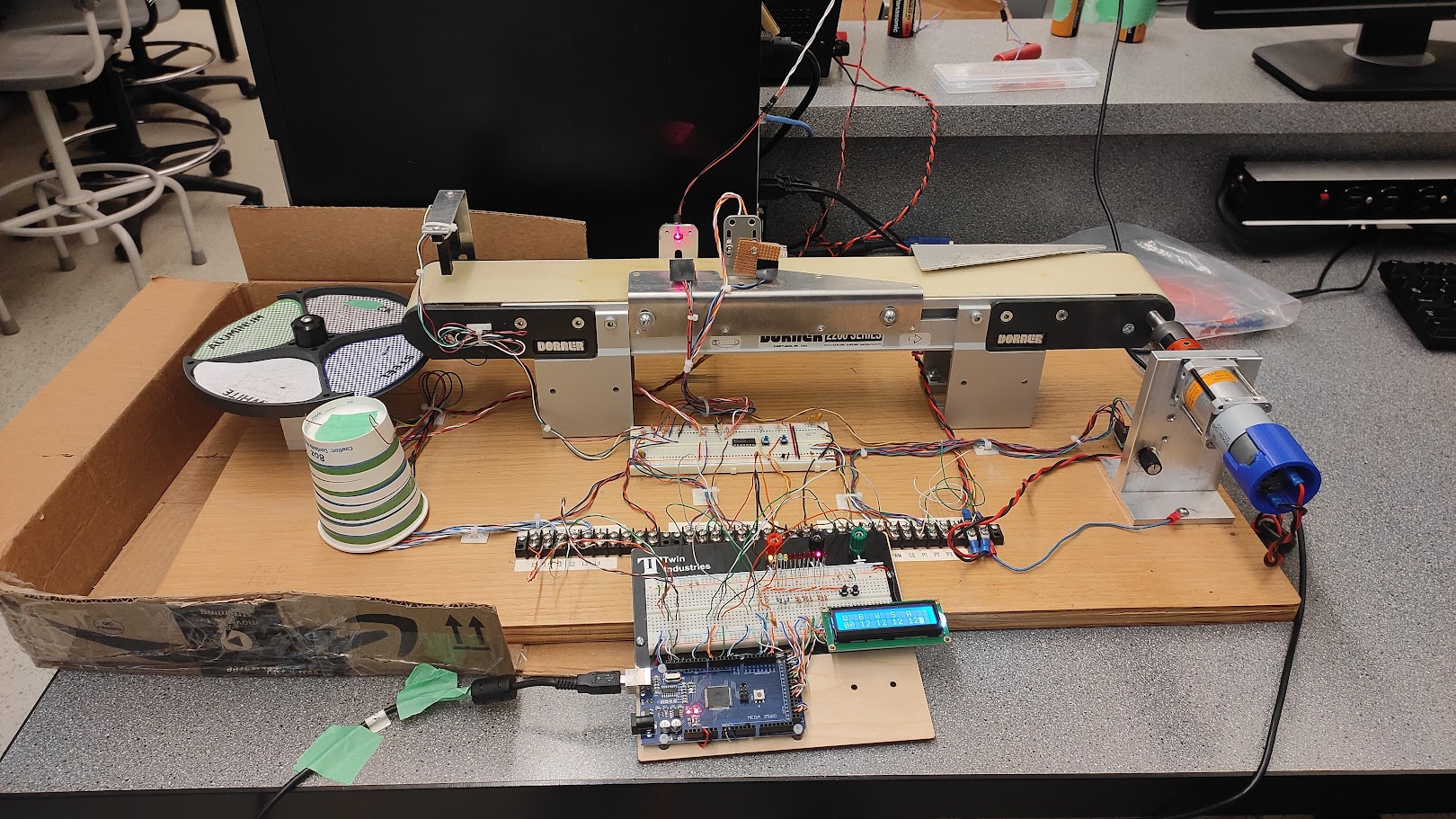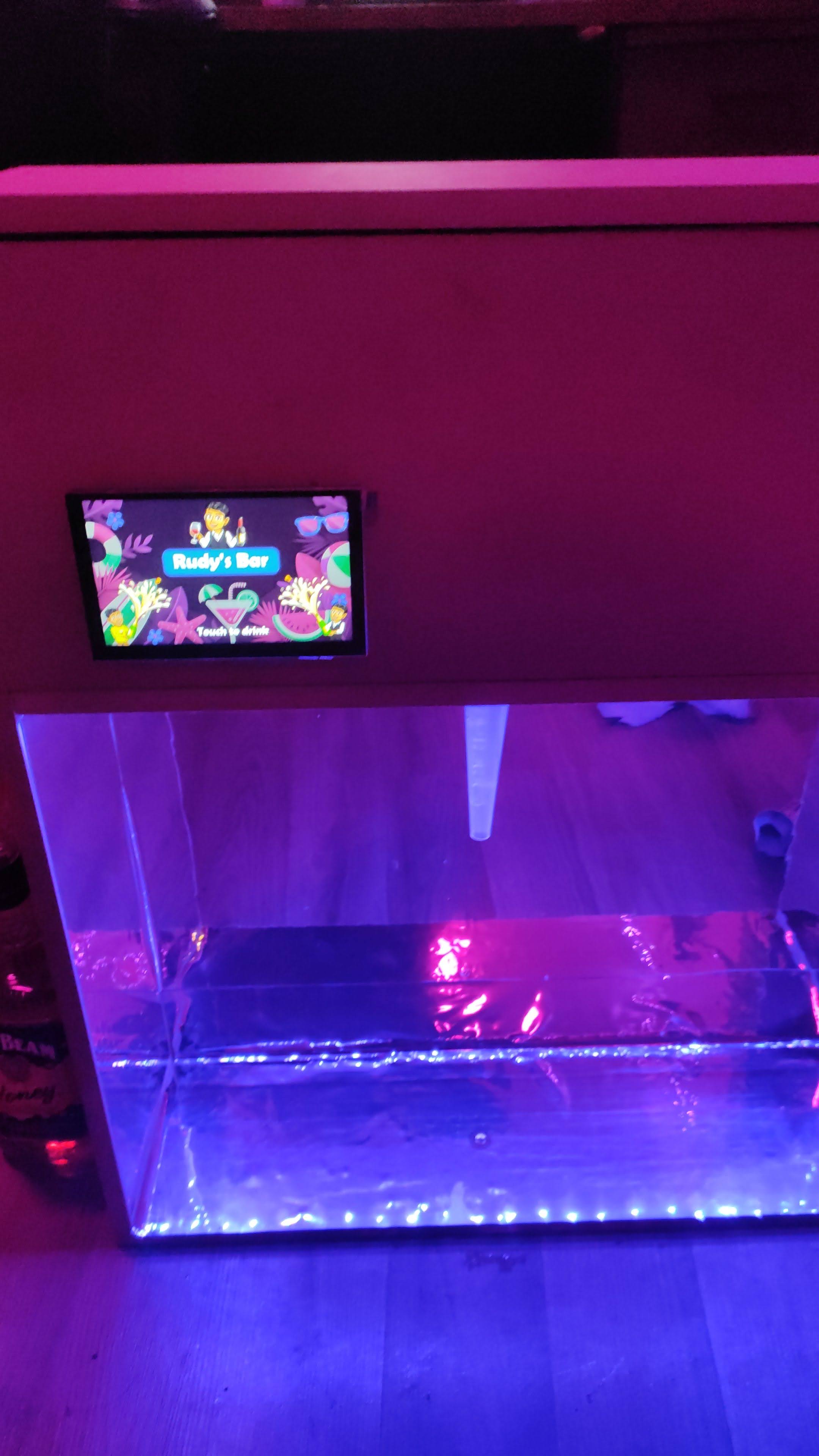Surveillance Drone
Surveillance Drone
Surveillance Drone
Overview
I embarked on the Surveillance Drone project to address the limitations of static CCTV cameras in my school, which had numerous blind spots that students exploited. This project aimed to create a mobile surveillance system using a Raspberry Pi, offering enhanced security and coverage.
Technical Approach
System Components:
Microcontroller: Initially, I used a Raspberry Pi for controlling motors and streaming video; later, I integrated a KK 2.1.5 flight controller for stability.
Motors and Propellers: Four motors and propellers to provide thrust and stability.
Electronic Speed Controllers (ESCs): To control motor speeds.
Power Distribution Board: To distribute power from the battery to the ESCs.
Battery: 3000 mAh Li-Po battery for power.
Frame: Custom-built frame to house all components.
Camera: HD camera for live streaming.
Remote Controller: 2.4 GHz radio frequency-based remote controller for manual control.
Development Process:
Initial Design and Planning: I investigated the limitations of existing surveillance systems and analyzed various drone designs.
Frame Construction: I built a lightweight frame using readily available materials.
Motor and ESC Installation: I mounted motors and ESCs on the frame and connected them to the power distribution board.
Programming: I programmed the Raspberry Pi to control the motors using PWM signals and to stream video from the camera.
Testing and Iteration: I conducted multiple test flights to identify and solve stability issues. I integrated a KK 2.1.5 flight controller for better flight stability and control.
Live Streaming: I used the Raspberry Pi to stream live video to a web browser, providing real-time surveillance capabilities.
Challenges and Solutions
Stability and Control:
Challenge: Ensuring stable flight and control of the drone.
Solution: Initially, I programmed the Raspberry Pi for motor control but later integrated a KK 2.1.5 flight controller for enhanced stability and precise control.
Live Streaming:
Challenge: Streaming live video with minimal latency.
Solution: I used the Raspberry Pi's camera module and Wi-Fi capabilities to stream video directly to a web browser.
Power Management:
Challenge: Managing power consumption to maximize flight time.
Solution: I used a 3000 mAh Li-Po battery and monitored power levels during flights to optimize usage.
Custom Enclosure:
Challenge: Protecting components while maintaining accessibility for adjustments.
Solution: I constructed a custom frame using Velcro, zip ties, and electric tape for secure and flexible component placement.
Project Outcomes
Current Functionality:
The drone can fly and hover stably, providing mobile surveillance capabilities.
It streams live HD video, enhancing real-time monitoring.
The drone is controlled via a 2.4 GHz remote controller, ensuring reliable manual operation.
Limitations:
The flight time is limited to approximately 15 minutes due to battery constraints.
The drone requires manual operation and continuous monitoring of the live feed.
Advanced features like GPS positioning, auto take-off, and auto-landing were not fully implemented.
Future Improvements
Enhanced Power Source: Switching to a solar-powered system to extend flight time.
Autonomous Operation: Integrating GPS and developing autonomous flight capabilities for predefined routes.
Improved Camera: Adding night vision capabilities to the camera for 24/7 surveillance.
Conclusion
The Surveillance Drone project successfully demonstrated the potential of mobile surveillance systems in enhancing security coverage. Despite some limitations, this project provided valuable insights and laid the groundwork for future improvements in drone technology and surveillance systems.
Overview
I embarked on the Surveillance Drone project to address the limitations of static CCTV cameras in my school, which had numerous blind spots that students exploited. This project aimed to create a mobile surveillance system using a Raspberry Pi, offering enhanced security and coverage.
Technical Approach
System Components:
Microcontroller: Initially, I used a Raspberry Pi for controlling motors and streaming video; later, I integrated a KK 2.1.5 flight controller for stability.
Motors and Propellers: Four motors and propellers to provide thrust and stability.
Electronic Speed Controllers (ESCs): To control motor speeds.
Power Distribution Board: To distribute power from the battery to the ESCs.
Battery: 3000 mAh Li-Po battery for power.
Frame: Custom-built frame to house all components.
Camera: HD camera for live streaming.
Remote Controller: 2.4 GHz radio frequency-based remote controller for manual control.
Development Process:
Initial Design and Planning: I investigated the limitations of existing surveillance systems and analyzed various drone designs.
Frame Construction: I built a lightweight frame using readily available materials.
Motor and ESC Installation: I mounted motors and ESCs on the frame and connected them to the power distribution board.
Programming: I programmed the Raspberry Pi to control the motors using PWM signals and to stream video from the camera.
Testing and Iteration: I conducted multiple test flights to identify and solve stability issues. I integrated a KK 2.1.5 flight controller for better flight stability and control.
Live Streaming: I used the Raspberry Pi to stream live video to a web browser, providing real-time surveillance capabilities.
Challenges and Solutions
Stability and Control:
Challenge: Ensuring stable flight and control of the drone.
Solution: Initially, I programmed the Raspberry Pi for motor control but later integrated a KK 2.1.5 flight controller for enhanced stability and precise control.
Live Streaming:
Challenge: Streaming live video with minimal latency.
Solution: I used the Raspberry Pi's camera module and Wi-Fi capabilities to stream video directly to a web browser.
Power Management:
Challenge: Managing power consumption to maximize flight time.
Solution: I used a 3000 mAh Li-Po battery and monitored power levels during flights to optimize usage.
Custom Enclosure:
Challenge: Protecting components while maintaining accessibility for adjustments.
Solution: I constructed a custom frame using Velcro, zip ties, and electric tape for secure and flexible component placement.
Project Outcomes
Current Functionality:
The drone can fly and hover stably, providing mobile surveillance capabilities.
It streams live HD video, enhancing real-time monitoring.
The drone is controlled via a 2.4 GHz remote controller, ensuring reliable manual operation.
Limitations:
The flight time is limited to approximately 15 minutes due to battery constraints.
The drone requires manual operation and continuous monitoring of the live feed.
Advanced features like GPS positioning, auto take-off, and auto-landing were not fully implemented.
Future Improvements
Enhanced Power Source: Switching to a solar-powered system to extend flight time.
Autonomous Operation: Integrating GPS and developing autonomous flight capabilities for predefined routes.
Improved Camera: Adding night vision capabilities to the camera for 24/7 surveillance.
Conclusion
The Surveillance Drone project successfully demonstrated the potential of mobile surveillance systems in enhancing security coverage. Despite some limitations, this project provided valuable insights and laid the groundwork for future improvements in drone technology and surveillance systems.
Overview
I embarked on the Surveillance Drone project to address the limitations of static CCTV cameras in my school, which had numerous blind spots that students exploited. This project aimed to create a mobile surveillance system using a Raspberry Pi, offering enhanced security and coverage.
Technical Approach
System Components:
Microcontroller: Initially, I used a Raspberry Pi for controlling motors and streaming video; later, I integrated a KK 2.1.5 flight controller for stability.
Motors and Propellers: Four motors and propellers to provide thrust and stability.
Electronic Speed Controllers (ESCs): To control motor speeds.
Power Distribution Board: To distribute power from the battery to the ESCs.
Battery: 3000 mAh Li-Po battery for power.
Frame: Custom-built frame to house all components.
Camera: HD camera for live streaming.
Remote Controller: 2.4 GHz radio frequency-based remote controller for manual control.
Development Process:
Initial Design and Planning: I investigated the limitations of existing surveillance systems and analyzed various drone designs.
Frame Construction: I built a lightweight frame using readily available materials.
Motor and ESC Installation: I mounted motors and ESCs on the frame and connected them to the power distribution board.
Programming: I programmed the Raspberry Pi to control the motors using PWM signals and to stream video from the camera.
Testing and Iteration: I conducted multiple test flights to identify and solve stability issues. I integrated a KK 2.1.5 flight controller for better flight stability and control.
Live Streaming: I used the Raspberry Pi to stream live video to a web browser, providing real-time surveillance capabilities.
Challenges and Solutions
Stability and Control:
Challenge: Ensuring stable flight and control of the drone.
Solution: Initially, I programmed the Raspberry Pi for motor control but later integrated a KK 2.1.5 flight controller for enhanced stability and precise control.
Live Streaming:
Challenge: Streaming live video with minimal latency.
Solution: I used the Raspberry Pi's camera module and Wi-Fi capabilities to stream video directly to a web browser.
Power Management:
Challenge: Managing power consumption to maximize flight time.
Solution: I used a 3000 mAh Li-Po battery and monitored power levels during flights to optimize usage.
Custom Enclosure:
Challenge: Protecting components while maintaining accessibility for adjustments.
Solution: I constructed a custom frame using Velcro, zip ties, and electric tape for secure and flexible component placement.
Project Outcomes
Current Functionality:
The drone can fly and hover stably, providing mobile surveillance capabilities.
It streams live HD video, enhancing real-time monitoring.
The drone is controlled via a 2.4 GHz remote controller, ensuring reliable manual operation.
Limitations:
The flight time is limited to approximately 15 minutes due to battery constraints.
The drone requires manual operation and continuous monitoring of the live feed.
Advanced features like GPS positioning, auto take-off, and auto-landing were not fully implemented.
Future Improvements
Enhanced Power Source: Switching to a solar-powered system to extend flight time.
Autonomous Operation: Integrating GPS and developing autonomous flight capabilities for predefined routes.
Improved Camera: Adding night vision capabilities to the camera for 24/7 surveillance.
Conclusion
The Surveillance Drone project successfully demonstrated the potential of mobile surveillance systems in enhancing security coverage. Despite some limitations, this project provided valuable insights and laid the groundwork for future improvements in drone technology and surveillance systems.

